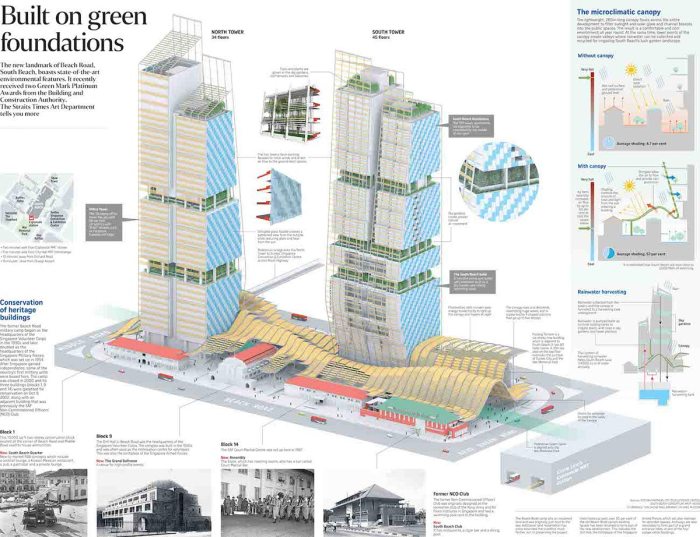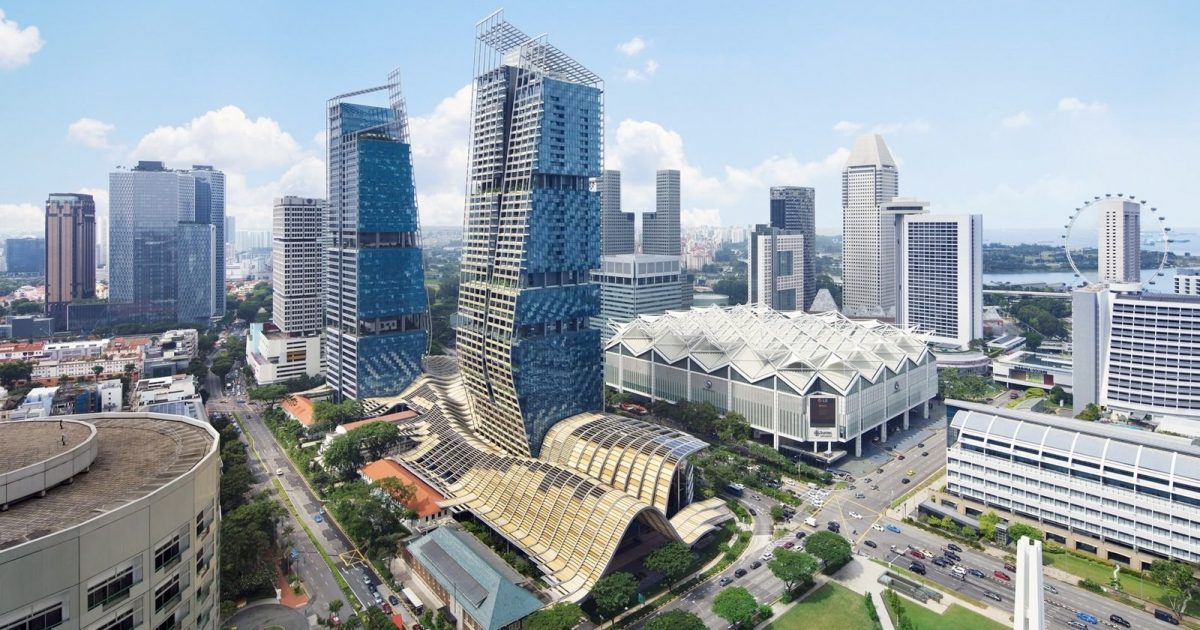South Beach Phases: From its humble beginnings to its current iconic status, South Beach’s evolution is a captivating story of architectural innovation, socioeconomic shifts, and cultural impact. This journey through time reveals how a once-sleepy seaside community transformed into a global hotspot, leaving behind a legacy of stunning Art Deco architecture and a vibrant cultural identity. We’ll explore the key periods that shaped South Beach, delving into the architectural styles, economic forces, and social changes that defined each phase.
This deep dive will unpack the fascinating interplay between design, economics, and culture, showcasing how South Beach’s distinct character emerged. We’ll examine the significant architectural styles – from Art Deco’s geometric elegance to Mediterranean Revival’s romantic charm – and how these styles reflect the economic and social climates of their respective eras. We’ll also explore the challenges and triumphs of preserving this architectural treasure trove for future generations.
Historical Development of South Beach

South Beach’s transformation from a quiet residential area to a globally renowned destination is a fascinating story of architectural evolution, economic shifts, and cultural change. Its development can be broadly categorized into distinct phases, each leaving its unique imprint on the landscape and character of the area. Understanding this historical progression reveals the layers of influence that have shaped South Beach into the iconic place it is today.
The early development of South Beach, from the late 19th and early 20th centuries, saw the area primarily as a quiet residential community. Development was relatively slow, with a focus on smaller, single-family homes. This period laid the foundation for the neighborhood’s distinctive street grid and laid the groundwork for future expansion. However, it was the Art Deco boom of the 1930s and 40s that truly transformed South Beach’s architectural character.
Art Deco and Mediterranean Revival Architecture (1920s-1940s)
The 1920s and 30s witnessed an explosion of construction, driven by the influx of tourists seeking a winter escape from the northern states. This era is characterized by the rise of Art Deco and Mediterranean Revival architecture. Art Deco buildings, with their streamlined forms, geometric designs, and decorative elements, became synonymous with South Beach. These structures often featured pastel colors, terrazzo floors, and decorative metalwork, reflecting the optimism and modernism of the era.
Simultaneously, Mediterranean Revival architecture, with its stucco walls, red tile roofs, and arched windows, contributed to the area’s unique visual appeal. This period established the foundation of South Beach’s distinctive architectural heritage.
Post-War Decline and Urban Renewal (1950s-1970s)
Following World War II, South Beach experienced a period of decline. The influx of tourists diminished, and many Art Deco hotels fell into disrepair. The construction of the MacArthur Causeway in 1938, initially intended to facilitate tourism, ironically contributed to the decline of the area’s beach by creating a barrier that prevented natural sand replenishment. The urban renewal efforts of the 1970s attempted to address this neglect, but often involved the demolition of historic structures.
This period highlights the challenges of preserving historic architecture amidst economic shifts and changing urban priorities.
The Renaissance of South Beach (1980s-Present), South Beach Phases
Beginning in the 1980s, South Beach underwent a remarkable renaissance. Driven by a renewed interest in Art Deco architecture and the influx of investment, the area experienced a dramatic revitalization. Historic buildings were meticulously restored, and new construction adhered to the existing architectural styles. This period saw the transformation of South Beach into a vibrant, cosmopolitan hub. The preservation efforts were crucial in safeguarding the unique architectural heritage of the area.
The restoration and repurposing of Art Deco hotels into luxury accommodations played a significant role in attracting tourists and investment.
Architectural Styles and Building Materials in South Beach
The following table summarizes the key architectural styles and building materials used during different phases of South Beach’s development.
| Phase | Architectural Style | Building Materials | Key Characteristics |
|---|---|---|---|
| Early Development (late 19th – early 20th century) | Victorian, Queen Anne, Bungalow | Wood, stucco, brick | Smaller, single-family homes; less ornate detailing |
| Art Deco Boom (1920s-1940s) | Art Deco, Mediterranean Revival | Concrete, stucco, terrazzo, steel | Streamlined forms, geometric designs, pastel colors, decorative metalwork |
| Post-War Decline (1950s-1970s) | Mid-Century Modern (limited), neglect of existing structures | Concrete, various materials in poor condition | Deterioration of Art Deco and Mediterranean Revival buildings; some demolition |
| Renaissance (1980s-Present) | Art Deco (restoration and new construction), Contemporary with Art Deco influences | Concrete, stucco, terrazzo, steel, updated materials | Restoration of historic buildings; new construction that complements existing styles |
Preservation and Restoration Efforts in South Beach: South Beach Phases
South Beach’s distinctive Art Deco architecture is not just aesthetically pleasing; it’s a significant part of the city’s identity and a major draw for tourism. The preservation and restoration of these buildings has been a continuous and often challenging process, requiring significant investment and a delicate balance between historical accuracy and modern needs. This section details the efforts undertaken to maintain South Beach’s architectural heritage, the challenges faced, and the successful strategies employed.The preservation of South Beach’s architectural heritage began in earnest during the late 20th century, spurred by growing awareness of the area’s unique architectural significance and the threat of demolition and insensitive redevelopment.
This movement involved a combination of grassroots activism, government initiatives, and private investment, resulting in a remarkable transformation of the area from a state of disrepair to a vibrant and historically significant district.
Challenges in Maintaining Historical Integrity During Redevelopment
Redeveloping while preserving historical integrity presents a complex set of challenges. Balancing the need for modern amenities, such as updated plumbing and electrical systems, with the preservation of original architectural details requires careful planning and specialized expertise. The high cost of restoration, the difficulty in sourcing authentic materials, and the potential for unforeseen problems during renovation all contribute to the complexity of the process.
Furthermore, the need to meet modern building codes while respecting historical design features can often lead to compromises and difficult decisions. For instance, installing modern fire suppression systems in older buildings without compromising their facades requires innovative solutions and careful consideration.
Successful Preservation Projects in South Beach
Numerous successful preservation projects showcase the positive impact of dedicated efforts. The restoration of the Colony Hotel, for example, stands as a testament to meticulous craftsmanship and commitment to historical accuracy. The painstaking recreation of original details, from the pastel-colored facade to the interior design, transformed a dilapidated building into a landmark. Similarly, the restoration of the Art Deco Welcome Center, a building that once stood neglected, now serves as a showcase for the architectural style and a vital information hub for tourists.
These projects not only preserved architectural gems but also stimulated economic growth by attracting visitors and boosting tourism.
Methods and Techniques Employed in Art Deco Restoration
Restoring Art Deco buildings requires specialized knowledge and techniques. The process often begins with a thorough assessment of the building’s condition, identifying areas needing repair or replacement. This may involve detailed photographic documentation, structural analysis, and material testing. Restoration typically focuses on preserving original materials whenever possible. Where replacement is necessary, efforts are made to source materials that closely match the originals in terms of color, texture, and composition.
Traditional techniques, such as lime plastering and the use of historically accurate paints and finishes, are often employed. Furthermore, skilled artisans, often specializing in specific aspects of Art Deco construction, are crucial to the success of these projects. For example, the intricate geometric patterns that adorn many Art Deco facades often require highly specialized craftsmanship to restore accurately.
The use of modern technology, such as 3D scanning and digital modeling, can also assist in documenting existing features and creating accurate replacements.
South Beach’s Cultural Impact Across Its Phases

South Beach’s cultural influence extends far beyond its sun-drenched shores and Art Deco architecture. Its evolution through distinct phases has profoundly shaped not only Miami’s identity but also contributed significantly to broader American and even global popular culture, leaving an indelible mark on fashion, music, art, and social attitudes. This impact stems from a complex interplay of historical events, demographic shifts, and the deliberate cultivation of a unique atmosphere.South Beach’s cultural impact is best understood by examining its evolution through key phases.
Each era brought unique cultural expressions, influencing and being influenced by the broader societal context.
The Early Years and the Art Deco Era
The early development of South Beach, marked by the construction of its iconic Art Deco architecture in the 1930s and 40s, laid the groundwork for its future cultural significance. This period established a visual identity that continues to define the area’s aesthetic. The streamlined, geometric designs of the buildings, reflecting the optimism and technological advancements of the era, became a powerful symbol of South Beach’s unique charm, attracting tourists and artists alike.
This visual legacy has been instrumental in shaping the area’s image as a stylish and sophisticated destination. The Art Deco architecture itself became a cultural artifact, drawing attention to its historical and aesthetic value, paving the way for later preservation efforts. The influence of this architectural style can be seen in countless films, television shows, and advertisements that use South Beach as a backdrop.
The Mid-20th Century and the Rise of Tourism
Following World War II, South Beach experienced a period of growth as a popular tourist destination. This era saw the emergence of a vibrant nightlife scene, with numerous hotels, casinos, and nightclubs catering to a diverse clientele. While not as visually defining as the Art Deco era, this period established South Beach as a place of entertainment and leisure, contributing to its reputation as a glamorous getaway.
The rise of tourism brought with it diverse cultural influences, enriching the area’s social fabric and laying the groundwork for the later cultural explosion. The development of a robust tourism infrastructure also contributed to the economic stability that allowed for later preservation and revitalization efforts.
The Art Deco Revival and the Gay Rights Movement
The late 20th century witnessed a significant cultural shift in South Beach. The Art Deco architecture, initially overlooked, experienced a revival, leading to preservation efforts that saved many of the iconic buildings from demolition. Simultaneously, South Beach became a haven for the LGBTQ+ community, attracting artists, designers, and activists who contributed to the area’s creative energy. This period saw the emergence of a vibrant gay culture that played a significant role in shaping the area’s identity, particularly its reputation for tolerance and inclusivity.
The intersection of Art Deco preservation and the burgeoning gay rights movement created a unique cultural blend that set South Beach apart from other tourist destinations. The area’s progressive stance on LGBTQ+ rights became a significant factor in its cultural appeal.
The 1980s and 1990s: The “Miami Vice” Era and Beyond
The 1980s saw South Beach become a global cultural phenomenon, largely thanks to the television show “Miami Vice.” The show’s stylized portrayal of South Beach’s nightlife, fashion, and crime, though often unrealistic, captured the imagination of audiences worldwide, contributing to the area’s image as a glamorous and exciting place. This period solidified South Beach’s position as a destination for fashion-conscious individuals and cemented its place in popular culture.
The show’s influence on fashion, particularly its use of pastel suits and neon colors, is still evident today. This period also saw an influx of wealthy investors and developers, leading to further transformation and gentrification.
The 21st Century: A Global Icon
In the 21st century, South Beach continues to evolve as a global cultural icon. Its reputation as a fashionable destination, coupled with its vibrant arts scene, diverse population, and ongoing preservation efforts, ensures its continued relevance. The area’s cultural influence extends to fashion trends, music styles, and artistic movements, with South Beach serving as a muse and inspiration for creators worldwide.
The area’s continued success demonstrates its enduring ability to adapt and reinvent itself while retaining its unique character and historical significance. The ongoing interplay between tourism, preservation, and artistic expression continues to shape South Beach’s cultural landscape, solidifying its status as a truly iconic destination.
South Beach’s transformation is a testament to the enduring power of architectural vision, economic dynamism, and cultural preservation. From its early days as a quiet residential area to its current status as a world-renowned destination, South Beach’s journey is a compelling narrative of urban evolution. Understanding its phases offers a valuable insight into the complex interplay of design, economics, and social forces that shape our cities.
The story of South Beach isn’t just about buildings; it’s about the people, the ideas, and the enduring spirit of a place that continues to captivate the world.

